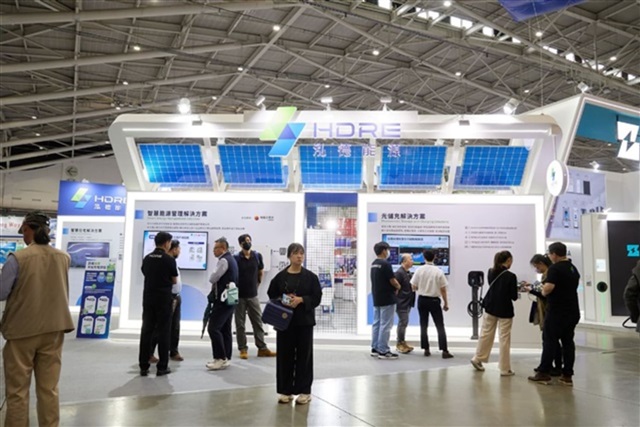Indian solar manufacturers are scrambling to protect their US business after Washington imposed a 50% tariff on solar modules and cells imported from India, a move that has sharply disrupted one of the country's fastest-growing export sectors.
Amid the global energy transformation driven by AI data centers, electric vehicle fleets, and ESG regulations, Taiwan's Seetel New Energy is emerging as a leading player in energy storage system design, manufacturing, and operations.
As the global push for net-zero emissions and energy transition gathers pace, energy saving and carbon reduction have become central to corporate competitiveness. With carbon fees now in place and mounting pressures on power stability and green electricity demand, manufacturers are moving beyond single equipment adoption toward comprehensive solutions that integrate diagnostics, storage, green power procurement, and microgrid systems.
Au Optronics (AUO) is accelerating its expansion in the smart energy sector, unveiling integrated "storage-first" and "solar-plus-storage" solutions at Energy Taiwan 2025. Partnering with its subsidiaries AET SustainTek and StarShining Energy, along with 21 ecosystem partners, AUO is positioning itself at the forefront of Taiwan's evolving post-grid energy storage landscape.
Taiwanese solar module maker TSEC is aiming to reposition itself amid ongoing geopolitical realignments. In remarks on October 29, 2025, TSEC executive vice president William Liao noted that the company has launched a flexible plan for global expansion of its world-leading wind-resistant module technology. Starting in 2026, TSEC aims to transform its shipment structure by leveraging two key opportunities, namely the battery shortage in the US, and specialized demand in Japan.
The global AI race enters a new phase in 2025, shifting focus from advanced cloud algorithms and high-performance computing chips to the coldest yet most critical physical constraint: electricity. Analysis firm Goldman Sachs highlights that power provision is fast becoming the "physical limit" for AI development.
Energy systems worldwide are undergoing a shift from conventional power generation and transmission frameworks, toward multinational collaboration driven by AI technology. During remarks on October 29, 2025, GreenRock Energy chairman Eden Yeh outlined the company's strategic blueprint for Asia: using its autonomous AI platform as the core, the company will leverage its financial strength and system integration capabilities to expand its operational scale in 2026, aiming to become a key energy system integrator spanning Taiwan, Southeast Asia, and Japan.
China's next phase of technology strategy is injecting fresh uncertainty into global supply chains, signalling a new round of strategic recalibration across industries worldwide.
Since its debut in 2009, Nvidia's GTC has been held in San Jose, California. Over the years, the conference has expanded to Japan, China, Taiwan, Germany, and other countries as technology and markets have evolved. The main highlight remains CEO Jensen Huang's two-hour keynote speech. This year, however, Nvidia held an additional event in Washington, DC, sparking speculation about Huang's next moves for the industry.
Taiwan's semiconductor industry is sounding the alarm. The Taiwan Semiconductor Industry Association (TSIA) has issued a rare public warning about critical power shortages that threaten the island's chip manufacturing dominance. The message is clear: without immediate action, Taiwan risks losing its competitive edge in the global semiconductor race.
The 2025 Energy Taiwan and Net-Zero Taiwan trade show will be held starting October 29, featuring more than 450 companies from home and abroad, including exhibitors from the UK, Belgium, Denmark, and the Netherlands, showcasing the latest wind power technologies. Given that Taiwan produces 90% of the world's advanced semiconductors, energy autonomy is crucial for supply chain resilience.
More coverage


